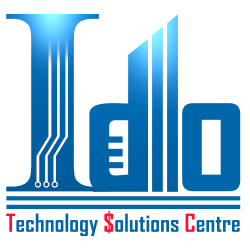The Coming Wave of AI Data Centers in Vietnam

A new demand – a major opportunity
As digital transformation accelerates and artificial intelligence (AI) booms worldwide, Vietnam is standing at the threshold of a new trend that could reshape its national digital infrastructure: the rise of AI data centers.
According to VnEconomy, as AI moves from laboratory experiments to real-world applications, the demand for storage and computing infrastructure — particularly big data and real-time data processing — has become more urgent than ever.
One of the pioneers leading this movement is IPTP Networks, a global infrastructure and telecommunications group with over 29 years of experience. In cooperation with the city of Da Nang, the company is investing about USD 200 million to build an AI data center project called AIDC DeCenter in the Da Nang Hi-Tech Park.
Is the coming wave of AI data centers in Vietnam real, or just hype? What are the key drivers, risks, and challenges? Let’s examine these questions in depth.
2. Driving forces – Why AI data centers matter
2.1. AI runs on data
Artificial intelligence — especially large models, chatbots, image and video processing, and real-time analytics — requires vast amounts of data and high-performance computing. One crucial but often overlooked component is the data center infrastructure: the backbone that stores, retrieves, and connects live data to digital services.
Vladimir Kangin, CEO of IPTP Networks, emphasized:
“AI is a national issue — not only a matter of security but also a necessity for storing information. Every user must store data, which means we have to develop AI to optimize operations in the national digital-transformation journey.”
2.2. Demand from defense and the market
According to Mr. Kangin, the first demand for AI data centers comes from defense — as military technology often pioneers innovations later adopted by society. GPS, for instance, started as a military system and is now integral to civilian life.
From the market perspective, once businesses start developing AI, they will require dedicated AI data centers. Meanwhile, hyperscale data centers are typically built by “big tech” firms to serve their massive internal needs.
2.3. National data-localization policy
Another strong driver is Vietnam’s policy of requiring local data storage — ensuring that user and enterprise data are stored and processed within the country to safeguard data sovereignty. Mr. Kangin pointed out that many Vietnamese companies currently store their data in Singapore or Hong Kong, but they will eventually need to relocate it back to Vietnam.
2.4. Attractive investment cost and profit margin
According to Cushman & Wakefield, Vietnam currently has one of the smallest numbers of data centers in the Asia-Pacific region. However, on a per-megawatt basis, construction costs are among the lowest and profit margins among the highest in Asia — second only to Singapore. This makes the country highly appealing to investors.
3. Current status and key challenges
3.1. Data-center concentration
At present, most Vietnamese data centers are concentrated in two major areas: Hanoi (Hoa Lac Hi-Tech Park) and Ho Chi Minh City (Tan Thuan Export Processing Zone). Experts believe such concentration is inefficient in terms of connectivity, stability, and risk diversification.
3.2. Electricity, connectivity, and geographic balance
Power supply is a critical bottleneck. Large data centers require enormous, stable, and cool energy sources. Mr. Kangin noted:
“In Vietnam, the largest data center is only about 30 MW (Viettel’s in Hoa Lac). The main issue is power.”
Connectivity is another factor. Although Vietnam has more than 200 international submarine and land cables, utilizing and interconnecting them efficiently remains a challenge.
Geographically, experts suggest decentralization: rather than clustering everything in Hanoi and HCMC, Vietnam should have “a data center every 100 kilometers along the North-South route” to improve resilience and regional balance.
3.3. Market saturation risks and global context
Globally, some hyperscale data centers have slowed or paused expansion, especially in the U.S. While Vietnam still has plenty of room to grow, uncoordinated investment without proper planning could lead to oversupply and waste.
3.4. Energy consumption concerns
Another VnEconomy report warned that 40% of AI data centers in Vietnam may face power shortages by 2027. This underscores the need for sustainable infrastructure planning and energy management.
4. Enormous opportunities — but strategy is essential
4.1. Investment and growth potential
Vietnam offers several major advantages:
- Rapidly growing domestic demand for data and AI.
- Government policy encouraging local data storage.
- Low construction cost and high ROI.
- Supportive local authorities — Da Nang, for instance, has welcomed IPTP Networks thanks to its hi-tech infrastructure and access to undersea cables.
- Global trends pushing tech firms to seek new data-center destinations beyond saturated markets.
4.2. The role of domestic companies
Not only foreign investors but also Vietnamese enterprises — particularly telecoms and tech firms — will play a vital role. Mr. Kangin believes that Viettel will lead AI development in Vietnam given its scale and responsibility.
4.3. Market segmentation and models
AI data centers aren’t limited to hyperscale facilities exceeding 100 MW. The market can be segmented into:
- Hyperscale centers – for global tech giants.
- Small and mid-scale AI data centers – serving Vietnamese firms in finance, blockchain, and emerging digital industries.
Notably, IPTP Networks reported that around 10% of its revenue already comes from blockchain-related services, showing diverse applications beyond pure AI computing.
4.4. Investment cycle and ROI
IPTP Networks plans to invest USD 200 million, starting with a USD 20 million initial phase. The payback period is projected at three to seven years, depending on market conditions — suggesting strong potential but requiring strategic patience.
5. Policy recommendations and strategic solutions
5.1. Leverage existing infrastructure
Mr. Kangin proposed that Vietnam should allow telecoms to utilize existing assets, such as running fiber-optic cables along existing power-transmission lines, to cut construction costs and speed up deployment.
5.2. Address the electricity challenge
Stable power is the lifeblood of large data centers. Vietnam should enhance electricity policies and consider nuclear or renewable energy options to guarantee reliable power supply for this critical infrastructure. Without sufficient energy, new centers will remain idle.
5.3. Decentralized network planning
Instead of clustering facilities in two major cities, Vietnam should develop a distributed network — a data center roughly every 100 km — to improve system resilience, lower latency, and stimulate regional development.
5.4. Data sovereignty and regulatory framework
Vietnam can learn from China’s strong data-sovereignty protection model. Robust legal and regulatory frameworks for data storage, privacy, and cross-border data flows are essential to attract foreign investors and ensure national security.
5.5. Support for domestic AI enterprises
The government should support local startups and SMEs by facilitating access to data-center infrastructure and AI platforms. This will build a sustainable ecosystem linking data centers → digital platforms → real-time applications such as finance, blockchain, healthcare, and gaming — exactly as IPTP Networks envisions.
6. Case study: Da Nang’s AIDC DeCenter project
6.1. Why Da Nang?
IPTP Networks chose Da Nang for several reasons: the company already had an office there since 2021; the city offers favorable logistics, access to undersea cables, and proximity to major projects like Lien Chieu Port and the Free Trade Zone.
The AIDC DeCenter project is designed not just as a traditional data center but as an AI-focused, real-time connectivity hub, serving multiple sectors including blockchain, digital finance, and smart-city applications. Around 10% of IPTP’s revenue currently comes from blockchain operations, indicating a diversified business strategy.
6.2. Regional comparison
Vietnam has fewer data centers than most Asia-Pacific countries — a disadvantage in infrastructure but a clear investment opportunity. With low construction costs and high profitability, Vietnam could soon join regional peers like Malaysia and Indonesia in attracting global data-center investments.
6.3. AI, blockchain, and data-driven industries
The growth of AI data centers will drive a broader ecosystem: AI firms need data centers; data centers enable AI applications in finance, gaming, and healthcare. This virtuous cycle could make Vietnam a regional digital hub if executed effectively.
7. Outlook – What will the “wave” look like?
Mr. Kangin predicts that two or three hyperscale data centers could be built in Vietnam in the near future if major global tech companies enter the market. Over time, 10–20 hyperscale centers could emerge, with 2–3 owned by domestic giants.
Vietnam’s total data-center capacity is forecast to reach around 1,000 MW by 2030 — a massive leap from today’s levels.
This implies a three-stage evolution:
- Kick-off – early investment and pilot projects.
- Rapid expansion – new entrants and regional diversification.
- Maturity – competition, consolidation, and optimization.
The next five to seven years will be decisive for Vietnam’s positioning in the global AI-data-infrastructure race.
8. Risks and open questions
8.1. Investment saturation
Although opportunities abound, uncoordinated investments may lead to oversupply. Globally, hyperscale growth is slowing; Vietnam must avoid repeating mistakes seen elsewhere. Poor customer acquisition or inefficient operations could extend payback periods and reduce profitability.
8.2. Energy and connectivity risks
Without stable electricity or fast connections, data centers cannot perform efficiently. Latency and network instability could undermine Vietnam’s competitiveness in AI, blockchain, or gaming.
8.3. Legal and security challenges
Strong regulations on data privacy, sovereignty, and cybersecurity are crucial. Without them, foreign investors may hesitate, and operational standards may fall short of global benchmarks.
8.4. Domestic capacity and human resources
Do Vietnamese enterprises have sufficient expertise to design, build, and operate AI-grade data centers? Partnerships with global firms, technology transfer, and workforce training will be essential.
9. Conclusion
The wave of AI data centers in Vietnam is no longer speculation — it is beginning to take shape. Driven by surging data demand, rapid AI adoption, government data-localization policies, and attractive investment returns, Vietnam is poised to become a new regional hotspot for AI infrastructure.
However, success will depend on strategic execution: coordinated planning for power and connectivity, decentralized development, efficient use of existing resources, legal frameworks for data sovereignty, and support for domestic AI applications.
If done right, AI data centers could become one of the core pillars of Vietnam’s digital economy — empowering innovation, efficiency, and national competitiveness.
But if mismanaged — through rushed, unplanned, or energy-constrained investments — the opportunity could be lost, or worse, turn into a costly bubble.
As Mr. Kangin aptly remarked:
“Those who act early will seize the opportunity. Waiting five to ten years will be too late.”













